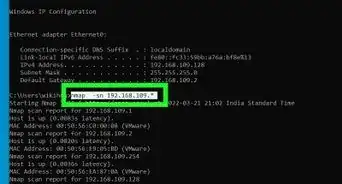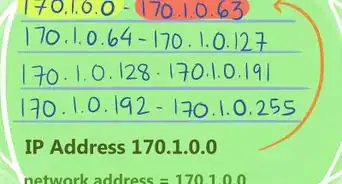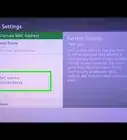This article was co-authored by wikiHow staff writer, Sophia Latorre. Sophia Latorre is a Content Manager on the wikiHow team. Before joining wikiHow, Sophia worked as a technical editor and was published in six International Energy Agency (IEA) Wind Annual Reports. Now, she writes, edits, and reviews articles for the wikiHow Content Team, working to make the content as helpful as possible for readers worldwide. Sophia holds a BA in English from Colorado State University.
This article has been viewed 338,737 times.
Learn more...
Data transfer rate is the speed that a certain amount of data is transferred over a given period of time. You might want to know the transfer rate if you’re downloading something online or transferring data from one source to another. First, convert your units so the file size and transfer speed are in either bits or bytes with the same prefix (kilo, mega, giga, or tera). Then, plug your numbers into the equation S = A ÷ T in which A is the amount of data and T is the transfer time to solve for S, the speed, or rate, of transfer. You can also determine the amount of data or the transfer time if you know one of the variables plus the speed of transfer.
Steps
Converting Units
-
1Find the units regarding the file size. File sizes may be given in bits (b), bytes (B), Kilobytes (KB), Megabytes (MB), Gigabytes (GB), or even Terabytes (TB).
- Pay attention to whether the letters are upper case or lower case as well. For instance, a bit is denoted with a lowercase “b” while a byte is denoted with an uppercase “B”.
-
2Note the units that reference the transfer speed. Transfer speeds might be provided in bits per second (bps), bytes per second (B/s), Kilobytes per second (KB/s), Megabytes per second (MB/s), or Gigabytes per second (GB/s).Advertisement
-
3Convert the units to either bits or bytes and make sure they have the same prefix. Before you use the transfer rate equation, ensure you are using the same units for the size and speed. Don’t worry about the time units for now.[1]
- 8 bits (b) = 1 byte (B); turn bits into bytes by dividing by 8, or convert bytes to bits by multiplying by 8.
- 1,024 bytes = 1 Kilobyte (KB); convert bytes to Kilobytes by dividing by 1,024 or turn Kilobytes into bytes by multiplying by 1,024.
- 1,024 Kilobytes = 1 Megabyte (MB); change Kilobytes into Megabytes by dividing by 1024 or convert Megabytes into Kilobytes by multiplying by 1,024.
- 1,024 Megabytes = 1 Gigabyte (GB); convert Megabytes into Gigabytes by dividing by 1024 or turn Gigabytes into Megabytes by multiplying by 1,024.
- 1,024 Gigabytes = 1 Terabyte (TB); change Gigabytes into Terabytes by dividing by 1024 or convert Terabytes into Gigabytes by multiplying by 1,024.
-
4Convert between hours, minutes, and seconds as needed. As you know, there are 60 seconds in 1 minute and 60 minutes in 1 hour. To convert from seconds to minutes, divide by 60. To convert from minutes to hours, divide by 60. To convert from hours to minutes, multiply by 60. To convert from minutes to seconds, multiply by 60.[2]
- To convert from seconds to hours, divide by 3,600 (60 x 60). Or, convert from hours to seconds by multiplying by 3,600.
- Generally, the speed is denoted in seconds. If you have very many seconds, though, such as for large files, you can convert to minutes or even hours.
Calculating Speed, Time, & Data
-
1Calculate the transfer speed by dividing the amount of data by the transfer time. Plug the amount of data (A) and transfer time (T) to solve for the rate, or speed (S), into the equation S = A ÷ T.[3]
- For example, you might have transferred 25 MB in 2 minutes. First, convert 2 minutes to seconds by multiplying 2 by 60, which is 120. So, S = 25 MB ÷ 120 seconds. 25 ÷ 120 = 0.208. Therefore, the transfer speed is 0.208 MB/s. If you want to turn this into Kilobytes, multiply 0.208 by 1024. 0.208 x 1024 = 212.9. So, the transfer speed is also equal to 212.9 KB/s.
-
2Divide the amount of data by the transfer speed to find the transfer time. If you want to solve for the transfer time (T) instead, input the amount of data (A) and the rate or speed (S) of transfer into the equation T = A ÷ S.[4]
- For instance, say you transferred 134 GB at a rate of 7 MB/s. First, convert GB to MB so you’re working with the same units in each part of the equation. 134 x 1,024 = 137,217. So, you transferred 137,217 MB at a rate of 7 MB/s. To solve for T, divide 137,217 by 7, which is 19,602. Therefore, it took 19,602 seconds. To convert this to hours, divide by 3,600, which is 5.445. In other words, it took 5.445 hours to transfer 134 GB at a rate of 7 MB/s.
- If you want to use hours and minutes, separate out the whole number and decimal: you have 5 hours and 0.445 hours. To convert 0.445 hours to minutes, multiply by 60. 0.445 x 60 = 26.7. To convert the decimal into seconds, multiply it by 60. 0.7 x 60 = 42. Altogether, it took 5 hours, 26 minutes, and 42 seconds.
-
3Multiply the transfer time by the transfer speed to find the amount of data transferred. To figure out how much data was transferred, use the equation A = T x S, in which A is the amount of data, T is the transfer time, and S is the speed or rate of transfer.[5]
- For example, you can figure out how much data was transferred in 1.5 hours at a rate of 200 bps. First, convert hours to seconds by multiplying by 1.5 by 3,600, which is 5,400. So, A = 5,400 seconds x 200 bps. A = 1,080,000 bps. To convert to bytes, divide by 8. 1,080,000 ÷ 8 = 135,000. To convert to Kilobytes, divide by 1,024. 135,000 ÷ 1,024 = 131.84. Therefore, 131.84 KB of data was transferred in 1.5 hours at a rate of 200 bps.
Community Q&A
-
QuestionHow do I calculate the time taken to transfer the files?
 Community AnswerSay a file of 640,000 bits transfers by the rate of, say, 64 kbps, the time taken is 640000 / (64 x 1000) = 10 seconds.
Community AnswerSay a file of 640,000 bits transfers by the rate of, say, 64 kbps, the time taken is 640000 / (64 x 1000) = 10 seconds. -
QuestionHow do I calculate data transfer rates?
 Community AnswerFor example, 50 Mbps or “50 meg a second” is not 50 Megabytes per second, but rather 50 Megabits per second. So in order to calculate the transfer rate of a file size we need to convert the size to bits, however, you can't just say that 2 Gb x 8 will give you the number of bits in the file.
Community AnswerFor example, 50 Mbps or “50 meg a second” is not 50 Megabytes per second, but rather 50 Megabits per second. So in order to calculate the transfer rate of a file size we need to convert the size to bits, however, you can't just say that 2 Gb x 8 will give you the number of bits in the file. -
QuestionHow do I calculate the data transfer rate given size and baud rate?
 Community Answer2 kbytes = 2048 bytes. Transmission of a byte requires: 1 start bit; 8 bits = actual byte; 1 bit parity; and 2 bits stop for a total of 12 bits. The baud is 2048 * 12 = 24576 baud.
Community Answer2 kbytes = 2048 bytes. Transmission of a byte requires: 1 start bit; 8 bits = actual byte; 1 bit parity; and 2 bits stop for a total of 12 bits. The baud is 2048 * 12 = 24576 baud.
References
- ↑ https://news.jpy.com/kbase/support-articles/2015/9/7/calculating-network-data-transfer-speeds
- ↑ https://www.khanacademy.org/math/cc-fifth-grade-math/imp-measurement-and-data-3/converting-units-of-time/a/converting-units-of-time-review
- ↑ https://youtu.be/ozkMrc0MDUs?t=78
- ↑ https://youtu.be/ozkMrc0MDUs?t=71
- ↑ https://youtu.be/ozkMrc0MDUs?t=91
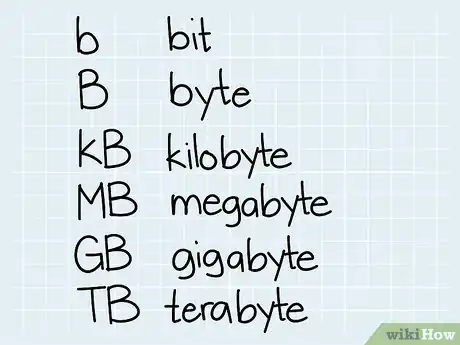
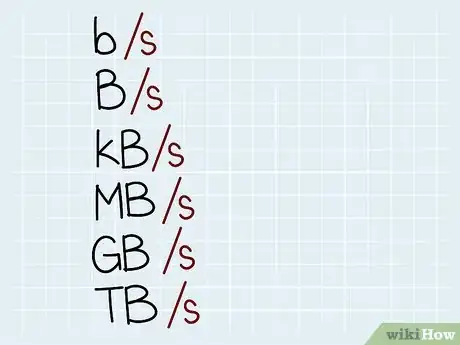
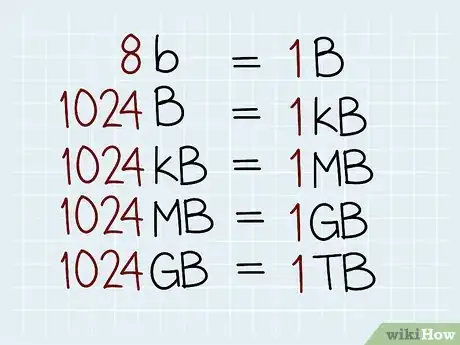

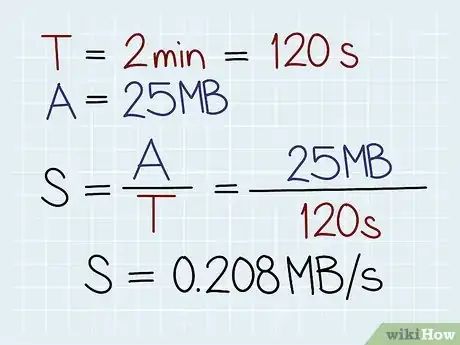
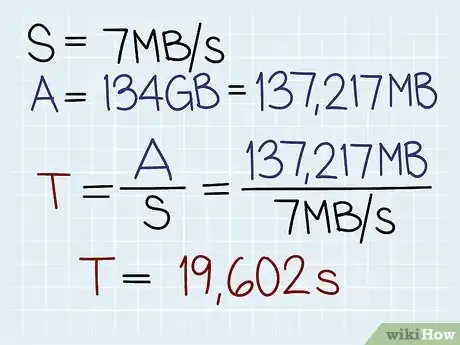
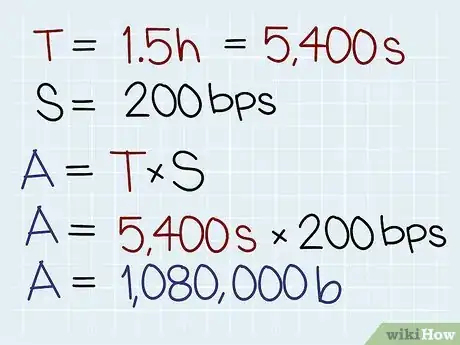


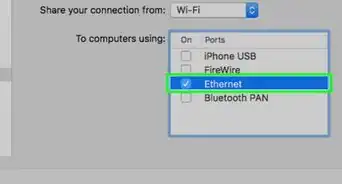
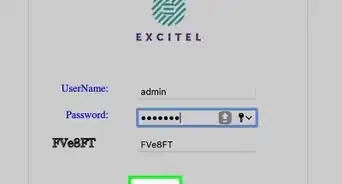
-Step-26-Version-2.webp)
